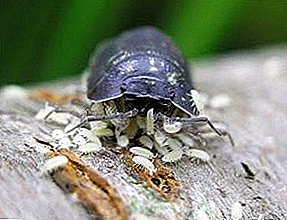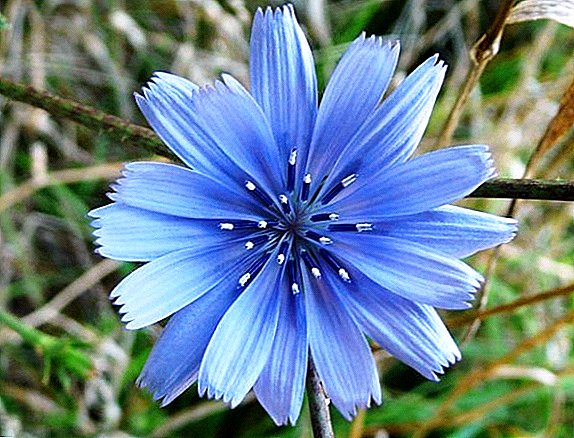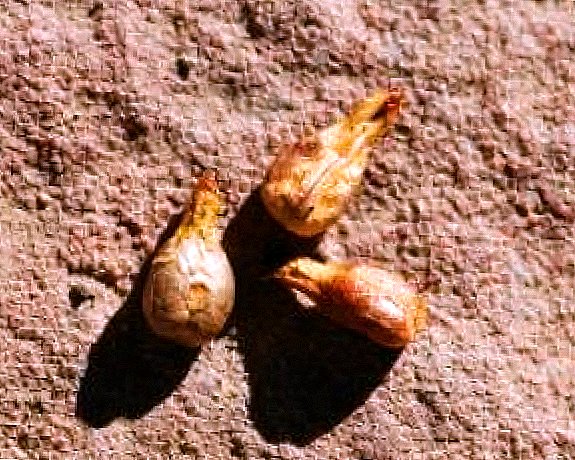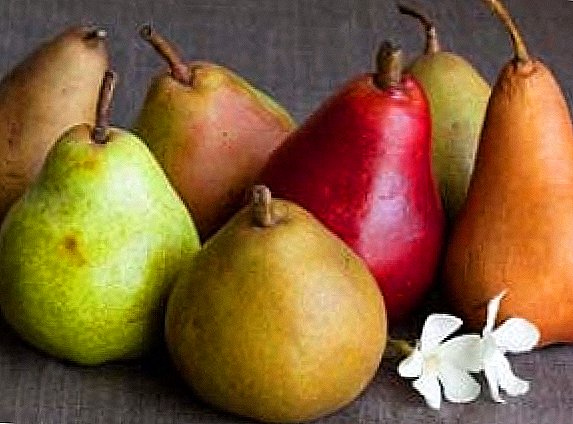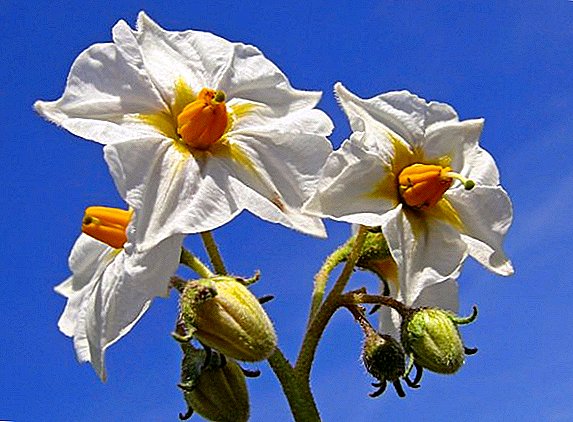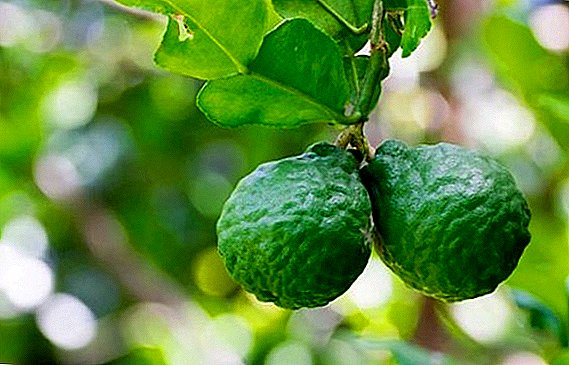 Bergamot morning tea is a bewitching scent from a cup for the whole house! Everyone knows this name as a delightful additive in black teas. But what a wonder of bergamot and what kind of plant is it? The tree is a hybrid, the result of crossing lemon, orange and mandarin. The far homeland of bergamot is Southeast Asia. The name of fragrant plants was given in honor of the city of Bergamo, which is located in Italy. Whole plantations of bergamot were grown there.
Bergamot morning tea is a bewitching scent from a cup for the whole house! Everyone knows this name as a delightful additive in black teas. But what a wonder of bergamot and what kind of plant is it? The tree is a hybrid, the result of crossing lemon, orange and mandarin. The far homeland of bergamot is Southeast Asia. The name of fragrant plants was given in honor of the city of Bergamo, which is located in Italy. Whole plantations of bergamot were grown there.
The valuable harvest of the “Bergamo orange” was harvested, and after processing it was obtained essential oil. Bergamot is grown on the coast of the warm Ionian Sea in the Italian province of Calabria. There are fruit processing plants. Over time, growing bergamot has become a profitable activity for countries with a warm and humid climate. It turned out to be so profitable that they were engaged in such countries as China and India. There are bergamot gardens on the Black Sea coast and the Caucasus.
Bergamot fruits sometimes resemble an orange, sometimes a yellow-green crumpled pear. Often, because of the similar smell of leaves, people confuse bergamot and monard. Bergamot is an evergreen tree, and monarda is a grassy plant. Gardeners who grow bergamot at home confirm that this plant develops well and bears fruit indoors.
Optimal conditions for growing bergamot in the house
In order for the plant to please you not only with its appearance, but also with fragrant fruits, you need appropriate care for it.
Location and lighting
Bergamot is a heat-loving plant, therefore it is very demanding for lighting. Capacity with planted plants can be put on the windowsill. Bergamot grows with pleasure on any windows, except northern ones. If your tree lives on the south window, then in the hot time of the day (from noon until 4:00 pm) such a window is covered with blinds or a curtain. An uncovered plant will get sunburns and the leaves will lose their decorative effect. But with the bergamot pot on the north window, you can grow a strong plant. It is only necessary to give the tree the missing light, illuminating it with phytolamps for 5-6 hours. Bergamot requires a ten-hour daylight. 
Temperature
The plant loves warmth. The most suitable temperature for well-being of bergamot in summer and spring is 25-35 degrees Celsius. The requirements for indoor temperature in the winter vary slightly. You need a temporary, from October to the end of January, a decrease in room temperature. Such a temperature regime will provide the plant with the necessary rest period. In February, the temperature is gradually raised to +20 degrees, and the plant enters a period of growth.
For flowering and successful pollination of flowers, the temperature in the room needs to be maintained not lower than 18-22 degrees Celsius. If the bergamot tree does not enter a period of rest, then there will be no fruiting.
Features care for bergamot at home
Bergamot is a demanding plant, and care for it is to provide sufficient lighting, protection from pests and diseases, fertilizer, timely watering of the soil and sprinkling the tree on the leaves. Under natural conditions, bee and other insects produce the pollination of bergamot flowers. But at home it is necessary to resort to artificial pollination of flowers. If you do not pollinate the flowers of bergamot manually, the crop you will not wait.
 For successful pollination, take a twig and wind on the tip of a small piece of fleece. Carefully spend a couple of times with such a "tool" inside the male flower. Then perform the same operation with the female flower of bergamot. For reliability, perform artificial insemination twice - in the morning and in the evening. The air temperature should be no higher than 18 ° C, since the pollen of the plant becomes sterile in hot air. It is worth making efforts to pollinate the plant, because the bergamot is very decorative, when it blooms, its snow-white flowers exude a delicate aroma.
For successful pollination, take a twig and wind on the tip of a small piece of fleece. Carefully spend a couple of times with such a "tool" inside the male flower. Then perform the same operation with the female flower of bergamot. For reliability, perform artificial insemination twice - in the morning and in the evening. The air temperature should be no higher than 18 ° C, since the pollen of the plant becomes sterile in hot air. It is worth making efforts to pollinate the plant, because the bergamot is very decorative, when it blooms, its snow-white flowers exude a delicate aroma.
Bergamot Pests
Even indoors plants can be attacked by pests. Very often it is a spider mite or scythe. Upon visual observation, the depression of the plant can be seen, the underside of the adult leaf plate is dotted with white dots, and the tick itself is visible. Young leaves of bergamot are rolled up into tubes and shrouded in a thin white cobweb. For pest control, there are special insecticidal drugs. But you can deal with the scourge and home, biologically pure means. For example, soap solution on tobacco dust.
 To prepare such a solution in 1 cup boiling water add 1 tbsp. spoon of tobacco dust (shag) and 10 g of gray laundry soap. Insist for at least six days, after which the infusion is ready for spraying.
To prepare such a solution in 1 cup boiling water add 1 tbsp. spoon of tobacco dust (shag) and 10 g of gray laundry soap. Insist for at least six days, after which the infusion is ready for spraying.
If a bergamot tree is struck with a shield, then shiny brown spots are formed on the leaves. The diameter of the spots - up to 5 mm. The same spots spill over the leaf stalks and the stem of the plant. Sticky gum may appear.
From shchitovki help wiping plants with this solution:
- 1 cup of warm water;
- 1 tbsp. spoon of lube;
- 40 g of soap;
- 2 tbsp. spoons of washing powder.
Before starting treatment, wrap the primer in a pot with a film well, it should not get caustic solution. Three hours after processing, put the pot in the bath and wash off the emulsion.
Did you know? Processing plants soap-oil emulsion can not be carried out more than once a week.
Watering and humidity
 In spring and summer, the soil in the pots dries quickly, so watering the plants should be taken carefully. Water the trees every 3-5 days, in no case allowing the soil to dry out. If the water for irrigation is taken tap, it must be defended within 2-3 days. When defending water, chlorine and lime inherent in urban water mains are deposited on the bottom.
In spring and summer, the soil in the pots dries quickly, so watering the plants should be taken carefully. Water the trees every 3-5 days, in no case allowing the soil to dry out. If the water for irrigation is taken tap, it must be defended within 2-3 days. When defending water, chlorine and lime inherent in urban water mains are deposited on the bottom.
You can filter or boil tap water, then it is also suitable for watering trees. Water for irrigation should not be cold. The best option for bergamot is water at room temperature.
Like all heat-loving plants, bergamot loves high humidity. In winter, the air in the room is dry and the desired humidity can be ensured by spraying the plant daily from a spray bottle. Responsive bergamot and watered with warm water over the leaves. During the reception of such a shower, the root zone of the tree and the pot itself are wrapped in polyethylene.
Did you know? Bergamot is very fond of watering rainwater or water obtained from melting snow.
Citrus Fertilizer
 In February, the bergamot wakes up, begins to build up green mass and throw out the first buds. In this period of growth, he needs additional feeding. You can fertilize the plant with organic and chemical fertilizers.
In February, the bergamot wakes up, begins to build up green mass and throw out the first buds. In this period of growth, he needs additional feeding. You can fertilize the plant with organic and chemical fertilizers.
Organic fertilizers give the plant strength to grow roots and leaf apparatus. Organic manure refers to mullein, which contains all the elements necessary for the plant. Zinc, magnesium, copper, nitrogen, phosphorus, potassium, calcium, molybdenum, boron and cobalt - all this is in a mullein. But you can not fertilize plants with clean mullein, you need to dilute it with water.
How to prepare a solution of mullein
On 1 воды4 buckets of mullein 10 liters of water are taken. The solution is thoroughly mixed and closed with a lid. It is necessary to close the container, if this is not done, then the plant's beneficial nitrogen will evaporate and an unpleasant pungent odor will spread. The solution is left to ferment for 12-14 days. During this time, the burning uric acid is evaporated from the organic fertilizer.
 For watering plants, fertilizer takes 1 part of the solution of mullein and add to it 4 parts of water, mix well and add to the root.
For watering plants, fertilizer takes 1 part of the solution of mullein and add to it 4 parts of water, mix well and add to the root.
You can buy liquid organic fertilizers ("Gumat", "Humisol" and others) in garden stores. To stimulate the formation of the ovary and fruit growth, fertilizers containing phosphorus and potassium are needed. Ready-made mixtures of such citrus fertilizers can also be purchased at garden centers.
Pruning
Often gardeners neglect the formation of indoor citrus trees. A tree grown from a cutting can itself form a beautifully leafy crown. But pruning branches and pinching buds make it possible to form a tree of any shape. If you allow bergamot to grow independently, in the first year of cultivation, it will throw out one escape of zero order. In the second year of cultivation, branches of the second order will appear, and only in the fourth or fifth years, shoots of the third, fourth, and fifth orders will appear. And after all on them fruit ovaries are formed.
 To artificially accelerate the formation of fruit branches, you need to cut off all the branches without exception. The very first twig (stem) is shortened at a height of 15 cm and with several well developed buds growing in different directions. It is from them that the main branches of the bergamot tree will later grow. When branches of 20-25 cm in length grow from the lateral buds, they are shortened, not allowing them to grow further. When second-order branches grow from the buds, they are also shortened (with a length of 10 cm). From the buds on the branches of the second order will grow branches, which are cut when they reach 5 cm.
To artificially accelerate the formation of fruit branches, you need to cut off all the branches without exception. The very first twig (stem) is shortened at a height of 15 cm and with several well developed buds growing in different directions. It is from them that the main branches of the bergamot tree will later grow. When branches of 20-25 cm in length grow from the lateral buds, they are shortened, not allowing them to grow further. When second-order branches grow from the buds, they are also shortened (with a length of 10 cm). From the buds on the branches of the second order will grow branches, which are cut when they reach 5 cm.
The process of forming lasts 2-3 years. If every year on the new branches is formed not one kidney, but 3-4, then everything is in order. If the buds are formed a little, you need to remove the central stem of the tree. Do not pinch the growth, namely, carefully, without damaging the side branches cut the main stem of the plant before the fork. At this, the molding of the bergamot tree is completed.
Important! If you let the growth and the formation of the bergamot tree to drift, then the fruit can not wait soon.
How to transplant bergamot at home
Citrus fruits do not respond well to transplantation, so they roll over along with a lump of earth without disturbing the root system. Transplantation of bergamot is possible in late February - early March, you need to try to catch up to the end of the rest period. Replant only young plants. In adult plants, the upper layer of the already depleted soil is removed from the pot and new soil is added. The pot is best chosen in the form of a cylinder.
If you plan to transplant a young plant:
- A larger pot is taken, “for growth” with a capacity of at least 2-3 liters.
- At the bottom of the pot should be provided holes for drainage of excess moisture.
- Before filling the soil in the pot, a little bit of expanded clay or several ceramic shards are placed on the bottom of the tank for drainage.
- Over the drainage we fall asleep a layer of sand (1-2 cm).
- The latest in the pot to fill the soil for bergamot.
 The best soil for planting bergamot is taken under birch trees, although you can take the soil under other deciduous trees. Only the top layer of soil is suitable (10-15 cm deep), where the soil is full of humus. The land taken from under chestnuts, oaks or nut trees does not fit. There are many tannins in the soil under these trees that will inhibit bergamot, and the planting will be unsuccessful. With the collected deciduous land they prepare a soil mixture that is most suitable for the plant.
The best soil for planting bergamot is taken under birch trees, although you can take the soil under other deciduous trees. Only the top layer of soil is suitable (10-15 cm deep), where the soil is full of humus. The land taken from under chestnuts, oaks or nut trees does not fit. There are many tannins in the soil under these trees that will inhibit bergamot, and the planting will be unsuccessful. With the collected deciduous land they prepare a soil mixture that is most suitable for the plant.Soil mix for planting bergamot:
- two lobes of hardwood;
- one share of river white sand;
- 0.5 share of loose humus;
- 0.5 fractions of wood ash.
If the transplanted plant has roots above the root collar, they should be removed with shears. When transplanting, the root neck of the bergamot is buried to the same depth as in the previous pot.
Important! Bergamot tree needs to be turned over to a bigger pot every three years. With each transplant, a new pot is bought in half more than the previous one.
Bergamot Breeding Tips
 Bergamot can be grown in two ways, and a detailed description is provided below. Bergamot plants can be propagated by cutting and growing from seed. If you or your friends have a bergamot tree, you can always cut the branches on the cuttings and try to grow from them a fruiting plant.
Bergamot can be grown in two ways, and a detailed description is provided below. Bergamot plants can be propagated by cutting and growing from seed. If you or your friends have a bergamot tree, you can always cut the branches on the cuttings and try to grow from them a fruiting plant.
It is possible to successfully grow bergamot from bones. Bergamot plants are an artificially created hybrid, therefore a plant grown from seeds grows and develops slowly, and begins to form a tree only in the fourth year. And it’s not a fact that a tree grown for such a long period will bloom and produce fruit. But both growers are available to gardeners.
Did you know? Bergamot, like any citrus indoor plant, does not like to change places, it gets used to a certain light, at a certain angle, and in case of a change in location, the plant can shed its leaves. If your tree grows well and feels great in its corner, do not disturb it with permutations.
Planting seeds
But let's take a closer look at how to plant bergamot seeds. It is best to plant bergamot from fresh seeds: bought the fruit of bergamot at the supermarket, ate it, and put the seeds in the ground. To germination was good, it is better not to dry the seeds of bergamot. Seeds are planted to a depth of 1 cm in a soil substrate consisting of 50% sand and 50% humus. After planting the seeds, the soil is watered and the pot is closed on top with a piece of glass or polyethylene.  Bergamot bones germinate well and quickly. One seed can give three or four sprouts. One sprout is selected and left, the strongest. The rest of the shoots in no case pulled out (so you can damage and the necessary shoots), and cut with scissors. The first shoots appear in the third week after planting. The glass that covers the pot is slightly shifted, thereby preventing the access of oxygen to the plant. If the pot is covered with polyethylene, several holes are made in it. The soil under the young plant is always kept a little wet. Excessive watering should be avoided so that the roots of the plant do not rot.
Bergamot bones germinate well and quickly. One seed can give three or four sprouts. One sprout is selected and left, the strongest. The rest of the shoots in no case pulled out (so you can damage and the necessary shoots), and cut with scissors. The first shoots appear in the third week after planting. The glass that covers the pot is slightly shifted, thereby preventing the access of oxygen to the plant. If the pot is covered with polyethylene, several holes are made in it. The soil under the young plant is always kept a little wet. Excessive watering should be avoided so that the roots of the plant do not rot.
Growing citrus seeds from seeds is not difficult, and bergamot in a month will decorate your window.
Reproduction by cuttings
Almost all citrus roots easily rooted cuttings. Gardeners use this when conducting May or June cuttings. Cutting is done with a special sharp knife, often homemade knives with a cutting edge made from a half-blade. For cuttings, only the upper part of the twigs up to 15 cm long is taken. Gardener cuts the right amount of cuttings, putting them in a box covered with a damp cloth. This precaution helps to avoid cambium drying on cuttings at the cut point. Having finished cutting the cuttings, the gardener dips them into the root growth stimulator. It can be a purchased "Kornovin" or a natural growth stimulator, such as honey or aloe juice. Next, the prepared cuttings are planted in a school intended for the cultivation of seedlings.
School for cuttings prepared in advance:
- A place is chosen in the penumbra so that the hot sun does not damage the weak cuttings, but the seedlings also have enough light.
- At the bottom of the future shkolki fit drainage of thick branches.
- On top of the drainage is placed a mixture of sand and soil (50:50).
- The cuttings treated with the root-forming preparation are planted.
Each stem after planting covered with a glass jar. If there are a lot of cuttings, a wooden frame gets off around the school and is covered with a film on top. For airing and irrigating the cuttings such a film is perforated. Perforation can be done with the help of a stud that is hot on the fire.  Within a month, cuttings in a small school take root, and they are transplanted into pots.
Within a month, cuttings in a small school take root, and they are transplanted into pots.
- A 200 ml pot is taken, the plants are planted one by one in a container.
- Three weeks after transplanting bergamot into the pot, you can fertilize the plant for the first time.
Having tried a little, it is possible to grow a two-meter, evergreen, beautiful tree in the room, with an unusual shape with glossy leaves and elegant snow-white flowers. And in the end, proudly setting a cup of tea on the table in front of the guests, add bergamot personally grown for the aroma!


